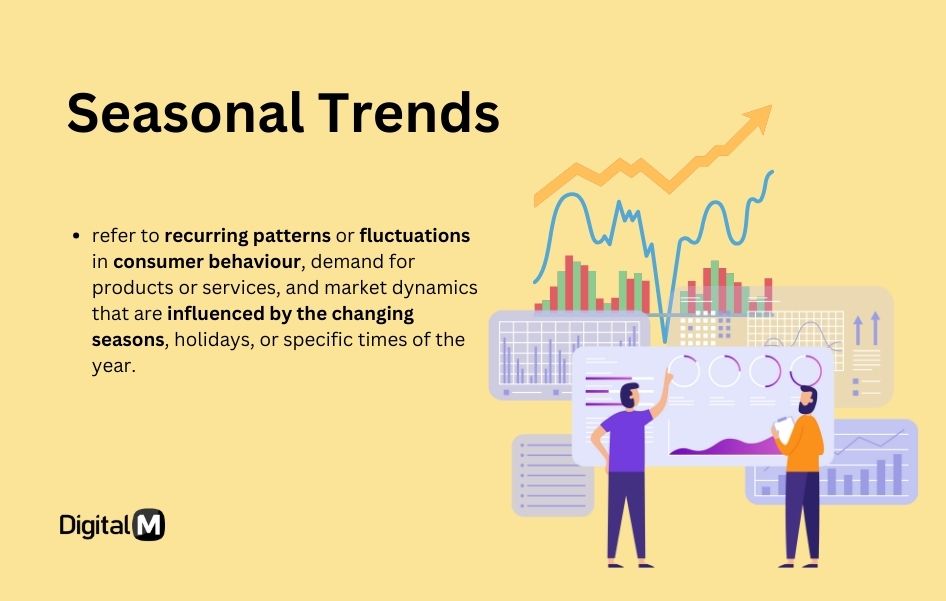Seasonal Trends
Seasonal trends refer to recurring patterns or fluctuations in consumer behavior, demand for products or services, and market dynamics that are influenced by the changing seasons, holidays, or specific times of the year.
Seasonal trends are like the patterns in what people buy or do during different times of the year. For example, buying swimsuits in summer and coats in winter.

Key Points:
Consumer Behavior: How people’s preferences, needs, and purchasing habits change based on the time of year.
Product Demand: Certain products or services may experience spikes or declines in demand during specific seasons.
Examples of Seasonal Trends:
Weather-Related Products: Clothing, accessories, and outdoor equipment sales may vary with the seasons. For instance, coats and scarves in winter, and swimwear in summer.
Holiday Sales: Increased consumer spending during holidays, such as Christmas, Valentine’s Day, or Halloween.
Travel and Tourism: Peak travel seasons, like summer vacations or winter holidays.
Sports and Events: Seasonal variations in the popularity of sports, festivals, and events.
Impact on Businesses:
Inventory Planning: Businesses need to adjust their inventory to meet the anticipated demand during specific seasons.
Marketing Strategies: Tailoring marketing campaigns to align with seasonal themes and consumer interests.
Sales Promotions: Offering discounts or promotions during peak seasons to attract more customers.
Suggested Reads: Top Digital Marketing Trends Your Business Should Leverage
Analyzing Seasonal Trends:
Historical Data: Analyzing past sales and customer behavior during different seasons.
Market Research: Understanding the broader market trends and consumer preferences during specific times.
Online and E-Commerce:
E-commerce platforms often experience significant seasonal trends, with events like Black Friday and Cyber Monday driving increased online shopping.
Challenges and Opportunities:
Businesses need to navigate challenges, such as managing inventory levels and staffing, while also leveraging opportunities to maximize sales during peak seasons.
Global Variations:
Seasonal trends can vary based on geographic location and cultural factors. For example, seasons in the Northern Hemisphere may differ from those in the Southern Hemisphere.
Why it Matters:
Revenue Impact: Understanding and capitalizing on seasonal trends can significantly impact a business’s revenue.
Customer Engagement: Aligning products and marketing with seasonal themes enhances customer engagement.
In summary, seasonal trends refer to recurring patterns in consumer behavior and product demand influenced by changing seasons, holidays, or specific times of the year. Businesses can strategically adapt their inventory, marketing, and promotions to capitalize on these trends, maximizing revenue and customer engagement.

